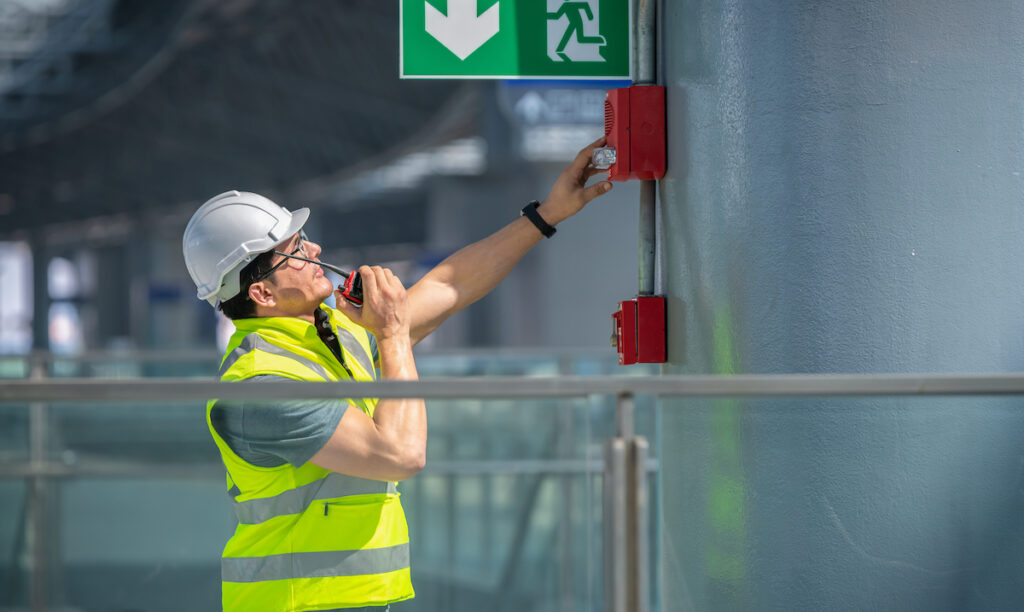Many of us will be familiar with the year-round workplace safety risks of our workplaces, however there are a number of risks that are specific to times of the year. During the summer months, we see seasonal risks associated with hot, dry weather – particularly where work activities occur outdoors. Besides being a risk to your employees, uncomfortable working conditions can lower productivity levels. The following list recaps some of the simple things you can watch out for as the summer months settle in.
Sun Safety
Exposure to the sun should not be confused with heat. UV rays pose hazards to workers, particularly those who spend long periods of time working outdoors such as construction workers, by causing damage to the skin. Even in overcast conditions there is still a risk of exposure to UV rays, so taking precautions on a daily basis is an important habit to keep.
Short term effects include sunburn which ranges from a mild reddening on the skin, to more serious burns that will blister and peel. Sunburn can also contribute to fatigue and dehydration.
According to a recent IOSH report, one UK study found that the level of UV rays that workers are exposed to over a lifetime could cause non-melanoma skin cancer. In fact, the report states that more than 3,000 cases of skin cancer reported every year are caused by outdoor work in construction and other industries. Outdoor workers are at an adverse risk of excessive exposure during the summer due to the nature of their work, meaning proper protection from UV rays and sun exposure is extremely important.
There are a number of precautions that should be taken to be Sun Safe with regards to workplace safety. Sunscreen should be applied on a regular basis, and this sunscreen should be a broad spectrum that protects against UVA and UVB rays (Irish Cancer Society). Bear in mind that sunscreen will wear off due to sweat so reapply as needed. Wearing light and loose fitting clothes that cover as much skin as possible such as long sleeved shirts and wide brimmed hats and sunglasses can also protect your skin and eyes.
Heat-related illness
It takes time to acclimatise to hot weather conditions, and very often in Ireland we see spurts of extremely hot weather and even heat waves. As these conditions can be unpredictable, it’s important to be aware of the dangers extreme heat can cause in the workplace.
Heat stress occurs when the body is unable to regulate its internal temperature and overheats. There are a number of factors that will contribute to heat stress, such as the rate or intensity of work, humidity levels, hydration, and the weight or insulation levels of clothing. Some of the most common symptoms include poor concentration, heat rash, muscle cramps and fainting. Heat exhaustion can lead on from this if not treated, and symptoms could include headache, giddiness, nausea, damp skin and even severe thirst – a late and serious symptom. If these symptoms are not treated, heat stroke may occur. This is the most severe heat related disorder that occurs, and can even result in death if not detected and treated early enough. Symptoms to watch out for include chills, irritability, disorientation, rapid shallow breathing and fainting.
Other dangers
Extreme heat and physical labour or exertion will increase the rate at which our bodies lose water, depleting hydration levels and thereby causing a health and safety risk. Symptoms include thirst, fatigue, muscle cramps, confusion, dizziness, nausea, excessive sweating and hot, dry skin.
Very often, visibility can be reduced due to glaring sunlight and steps should be taken to mitigate this risk. These steps should include the clear identification of work zones and the use of barriers surrounding them. If the work zone is on or near a road, a lower speed limit should be introduced, and workers should be equipped with the appropriate level of high visibility apparel.
Summer safety tips
Here are some simple workplace safety precautions you or your employees can take when working during the summer and hot weather.
- Plan and prepare: if your employees work outdoors, you may need to go beyond the usual health and safety measures and put additional measures in place to mitigate risks. This might include sunscreen or re-organising the workday so that the most strenuous tasks are scheduled for cooler times of the day, or mandating breaks in the shade.
- Dress appropriately: seasonal uniforms or equipment may be needed. In the summer months, this clothing should not only prevent exposure to the sun, but also be breathable and light so as to prevent insulation or overheating. Appropriate PPE should always be supplied.
- Stay hydrated: bear in mind that hydration requirements will rise along with temperatures and levels of work. Workers should avoid caffeinated beverages and instead opt for water or sports drinks that contain electrolytes.
- Training & Education: assist your employees by training them to recognise the signs of heat-related illness.
If you are unsure where to start with a workplace safety plan for the summer months, want to ensure your plan and processes are up to standard, or to fine tune and improve your precautions, you can speak to a member of the Ayrton Consultancy team today. Contact us today to find out more.



